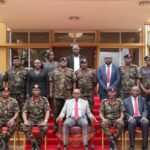The term “Congo rebels” typically refers to the various armed rebel groups operating in the Democratic Republic of the Congo (DRC), primarily in the eastern part of the country. These groups have been involved in ongoing conflicts over the past few decades, driven by a mix of ethnic tensions, control over valuable natural resources (such as minerals), and political instability.
Here are some of the most notable rebel groups:
- M23 (March 23 Movement): This is one of the most well-known rebel groups in the DRC, primarily active in the North Kivu province. The M23 rebels, composed mainly of Tutsi fighters, emerged in 2012, claiming that the Congolese government had failed to implement the peace agreements signed on March 23, 2009. The group briefly captured Goma, a major city in the east, before being defeated by Congolese forces with UN support in 2013. However, there have been reports of the group’s resurgence in recent years.
- FDLR (Democratic Forces for the Liberation of Rwanda): The FDLR is composed mainly of Hutu fighters, some of whom are linked to the 1994 Rwandan genocide. The group has been active in eastern Congo for many years, involved in various atrocities and resource exploitation. Rwanda has often accused the DRC of not doing enough to disarm and dismantle the FDLR, contributing to regional tensions.
- Allied Democratic Forces (ADF): Originally from Uganda, the ADF has become one of the most violent groups operating in the eastern DRC. The ADF has carried out numerous attacks against civilians, especially in the Beni region, and has been linked to Islamist militancy, though its specific motivations remain unclear.
- Mai-Mai militias: These are a collection of loosely organized local militias, often aligned along ethnic lines. They were initially created as self-defense forces, but many have evolved into predatory groups involved in criminal activities, including mineral smuggling, kidnapping, and attacks on civilians.
- CODECO (Cooperative for the Development of the Congo): A relatively newer group, CODECO is composed mainly of Lendu fighters and has been involved in conflicts with the Hema ethnic group in the Ituri province. This group has been responsible for numerous attacks on villages and massacres of civilians.
Key Factors Fueling Rebel Activity:
- Natural resources: The eastern DRC is rich in minerals like coltan, gold, and diamonds, which various rebel groups exploit to fund their activities.
- Weak state authority: The central government in Kinshasa has limited control over the eastern regions, making it easier for rebel groups to operate with impunity.
- Ethnic tensions: Longstanding ethnic rivalries, especially between Hutu and Tutsi populations, have fueled violence and the formation of armed groups.
- Foreign involvement: Neighboring countries, particularly Rwanda and Uganda, have been accused of supporting certain rebel factions for strategic and economic gains.
The situation in eastern Congo remains volatile, with frequent clashes between rebel groups, government forces, and UN peacekeeping forces. Despite various peace agreements and military interventions, the conflict has proven resilient, and civilians continue to suffer the brunt of the violence.

